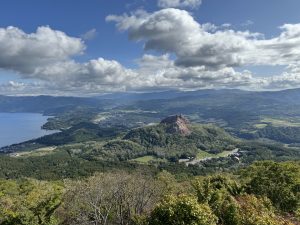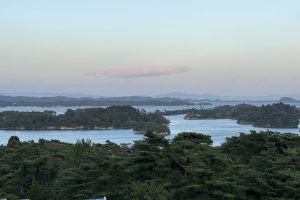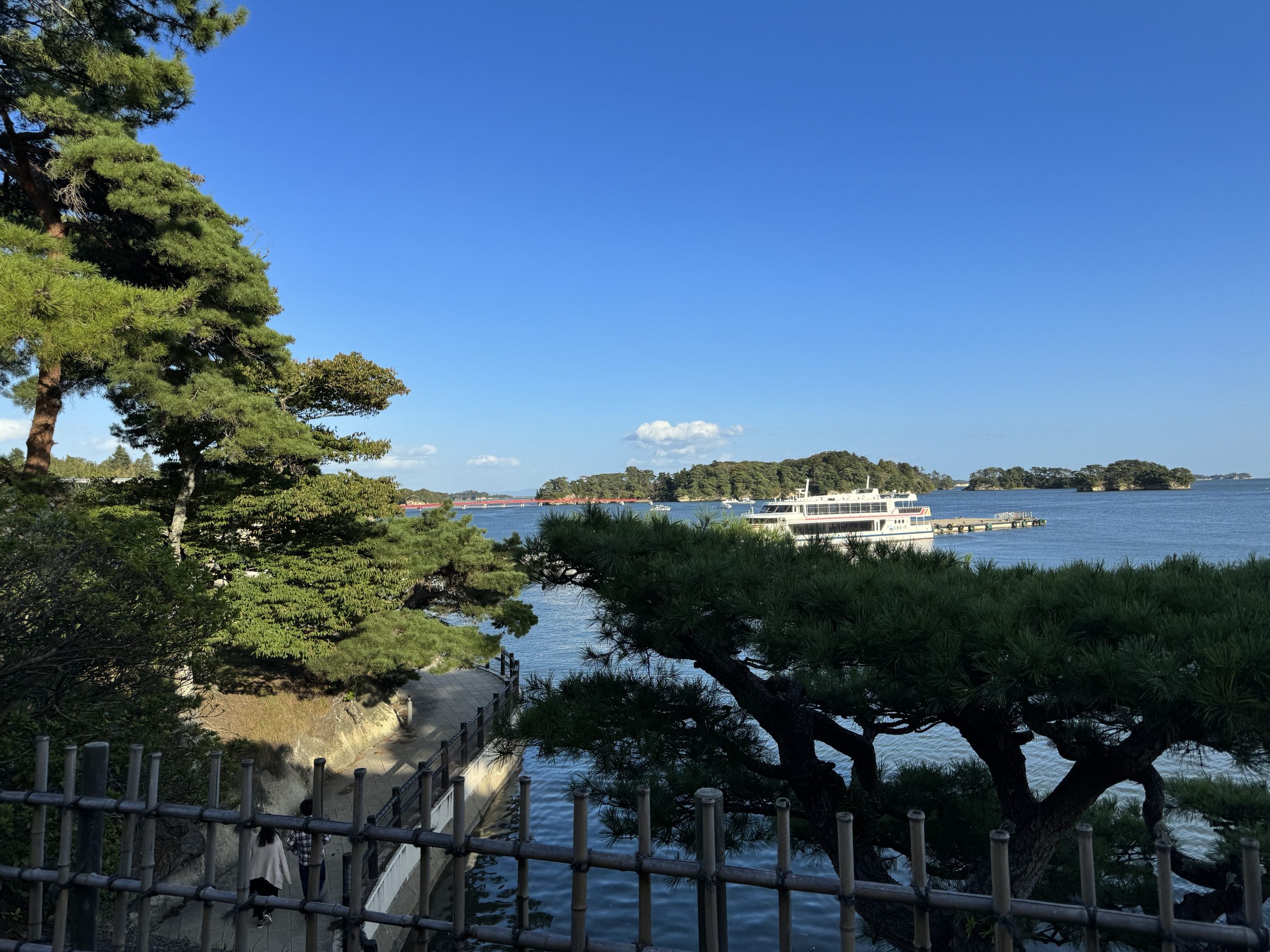The air in Sapporo (札幌)was crisp and invigorating, with a hint of the coming winter as I embarked on my journey through Hokkaido (北海道)in late September, 2023. I first heard the name of Japan’s Hokkaido from the Japanese movie star Ken Takakura (高倉健)in the 1980s when the first time Japanese films were allowed to be viewed in China. Since then I had been looking for a chance to see the place by myself. Although I once visited Japan in 2018, I did not have the chance to tour Hokkaido.
I was reluctant to travel with a travel agency, but as both my wife Rosa and I are getting older, travel by ourselves seems to be getting harder, especially in a country English and Chinese are not widely spoken. Thanks to Signet Tours, a travel agency with a good reputation with which we have been travelling several times, Rosa and I finally realized our wish to tour Hokkaido and northern Japan.

My adventure began at Otaru (小樽), a coastal town steeped in history. Otaru was once a significant port town that opened its doors to the United States in the late 19th century. The picturesque canal, lined with charming old warehouses, transported me back in time. Strolling through the sidewalk along the canal, I could feel how Japan opened its door to the west in the late 19th century when whether to open its doors to the west still remained a disputed topic.

In Sapporo, the Hokkaido Shrine (北海道神宫), a place of tranquility amidst the bustling city, is a must see attraction. The vibrant autumn leaves painted a vivid picture against the traditional Japanese architecture. The shrine offered a moment of reflection and connection with the spiritual heart of Hokkaido.

Next on my list was the Okurayama Ski Jump Stadium (大倉山滑雪跳臺競技場), a testament to the city’s Winter Olympics legacy. In 1972, the first time the Winter Olympics was held in Asia, and till now it remained the proud of Japan. The panoramic view from the top was breathtaking, overlooking the city and the surrounding mountains. I couldn’t help but imagine the adrenaline rush of ski jumpers as they soared through the air.

Leaving Sapporo behind, I made my way to the Upopoy National Ainu Museum and Park (民族共生象徵空間和國立愛努民族博物館). The museum provided a deep insight into the indigenous Ainu culture, fostering a profound respect for their traditions and history. The park’s natural beauty was a serene backdrop to the museum, and I was lucky to witness a traditional Ainu dance performance.

Noboribetsu (登別)awaited with its otherworldly landscapes, beginning with Jigokudani (地獄谷), or “Hell Valley.” Steam and sulfurous gases rose from the earth’s crust, creating a surreal and eerie atmosphere. The hot springs in Noboribetsu Onsen were a delightful contrast, offering a soothing escape from the cold. We especially enjoyed the hot spring bath from the balcony of the hotel room, where Rosa and I could bath together.

The journey continued to Lake Toya (洞爺湖), a serene and mesmerizing crater lake nestled in the mountains. The Suzan Ropeway carried me to the summit, where the panoramic views of the lake and its surroundings were simply awe-inspiring.

Hakodate beckoned with its coastal charm. I embarked on a tour boat at Onuma Quasi National Park (大沼國定公園), gliding across the serene waters surrounded by picturesque islets. As the sun began to set, I was treated to one of the world’s most beautiful night scenes atop Mt. Hakodate (函館山). The city’s lights sparkled like a sea of stars, casting a spellbinding glow over the landscape.

Goryokaku (五稜郭), with its star-shaped fort and lush moats, was a historical delight. The fall foliage added a touch of vibrant colors to the scene, and I marveled at the blend of nature and history.

Aomori in Towada-Hachimantai National Park (青森十和田嶓平國立公園)beckoned with its autumn allure. I visited the Jogakura Bridge, a suspension bridge that offered an incredible vantage point to soak in the seasonal transformation of the landscape.

Walking along the Oirase Stream (奧入瀨溪流)was another treatment. The streams formed waterfalls and flowing along the valley covered with trees and other greeneries provided us with much fun and joy. Each scene seemed to be a water-color painting.

The Morioka Handicraft Village (盛岡手工藝村)in Iwate showcased the craftsmanship of the region, and Kakunodate Bukeyashiki (角館武家屋敷)presented a glimpse into samurai history with its well-preserved houses and streets.
Matsushima (松島), one of Japan’s three most beautiful scenes, lived up to its reputation. The countless pine-covered islets scattered in the bay were a breathtaking sight. Chusonji Temple (中尊寺)was equally impressive, and I savored a moment of serenity while having tea at the Kanrantei Tea House (觀瀾亭).

As my journey through Hokkaido and northern Japan came to a close, I carried with me the memories of diverse landscapes, rich history, and the warm hospitality of the people I had met along the way. It was an adventure that had left an indelible mark on my soul, and I left with a deep appreciation for the beauty and cultural heritage of this enchanting region.

I am also impressed by our tourist guide, Ellen Chiang, who was born in Taiwan but married a Japanese gentleman, who knows the Japanese culture so well that while enjoying the charming sceneries of Japan, we also tasted the most delicious Japanese food and learned a lot about the culture and history of Japan.

